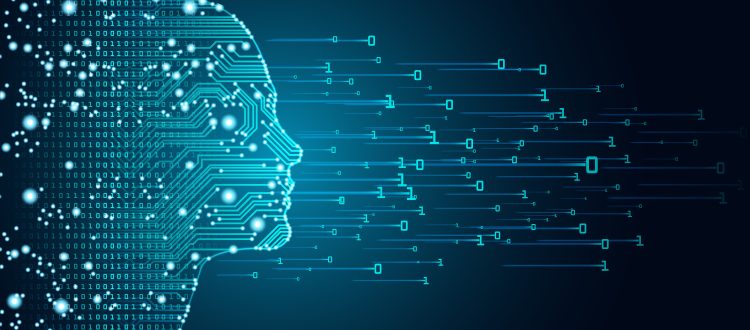Opportunity exists ‘between’ the data
Job Details
Job ID:Title:Opportunity exists ‘between’ the data
Location:,
Post Date:04/08/2025
Job Description
Opportunity exists ‘between’ the data
We are quickly moving towards a world where tech-bros, AI companies, and corporate leaders are all pushing for rapidly expanding efficiency through automation. This requires lots and lots of data. And data, generally, is constructed through a compartmentalization, definition and categorization of everything.
This is amazing, and it is also incredibly limiting.
I think it’s a mistake to move this too quickly in recruiting. Even as we begin to capture nuance, exceptions, layered critical thinking, and priority assessment into our AI, we are still likely to categorize, and over-label every data point, every data set, to a point where organic opportunities are missed.
By relying only on the logical alignments that might take place in recruiting x for x and y for y, we miss the point about what human resources actually are. Human’s are versatile, they are creative, and they are surprising. But we don’t get to see that ‘magic’ when we predict every outcome, narrow every field, and think in such a binary way. Hiring managers are already prone to boring, safe recruiting criteria. So let’s take a beat.
Yes we want more data so we can do more with less. The mantra from OpenAI and others seems to be ‘augmentation not replacement’, but augmentation really does mean replacement of mundane tasks, doesn’t it. So what are we replacing? And what do we lose?
In recruitment, the target space seems to be sourcing. Fair enough – sourcing is boring, and time-consuming, and can be mundane. What happens in sourcing when it is analog, though. A recruiter uses their eyes, their mind, and their experience to sort through hundreds of resumes and profiles a day to find appropriate candidates for their clients. And during this process, the synapses are firing, and every conversation, every email, every article we’ve read gets superimposed against this activity. Details we know about the way certain companies train their employees, about the culture, about company ethics (or lack thereof), about turnover, about benefits – it all informs our screening process.
The same goes for specific projects, – we know which ones went south, which ones lost money, which ones finished golden. And when we don’t know – we know how to research, who to call, what to ask.
And after grueling hours of looking through these profiles, we see one…with a glimmer of hope, of alignment, even if it is one small possibly aligned data point in an otherwise less than compelling profile, and that common thread is something we know could be a really big deal – we move to outreach. And then…..we speak with our candidates, because they are human – and increasingly in this world, humans respond to humans, not form letters, not email marketing, not the 2000th LinkedIn message saying (first name), blah blah blah.
Automated sourcing leads us away from continued discovery of all of that data, because we are only allowing ourselves to see exactly what we want to see, within the narrow Boolean search we’ve created, or the algorithm we’ve deployed, or the AI we have trained. And then…we will speak to fewer candidates, and we will learn less about each of their experiences, and we will miss those sweet spots. And we will connect – less.
The equation is simple – less connection means losing out on hiring someone who is an exceptional culture fit because the algorithm won’t pick up on certain nuances which are not captured in the pre-compartmentalized skill sets, relevant project experience, even college activities and sports, or personality traits.
There is something about the way people …are, the way they present, the way they analyze, the way they think and how that thinking is expressed – and I really think AI is nowhere near figuring this out.
Sure, all of this ‘magic’ I’m describing is just data at the end of the day. But until we start allowing the ‘chip in the brain’, I don’t see a way for AI to really compete…. And in the meantime our true personal computers – the ones sitting between our ears, …they are manufacturing human intuition – that magic that is based on every moment of our life to this point, and that’s a pretty darn good tool, one that we’ve learned to mimic but not replace – and one which I’m not prepared to replace anytime soon.
Some of the best hires I’ve seen in the 27 years of doing this have been non-linear. People who want change are enthusiastic about that change. Getting the chance to do something new creates a spark in them, arguably a greater spark than a 15% pay increase or better benefits, even better company culture. That spark fuels performance. It’s those hires that prove to be the most productive for both parties, even if the employer needs to invest a bit more for ramp up and even if the employee needs to give up a couple of dollars or perks.
When you hire without creativity, without holistic thinking you miss the sweet spots, the opportunities for greatness.
AI can supplement sourcing, and all of the other mundane work that we do. But if we don’t consider what we lose – even in the mundane work – we might be end up feeding into a more boring, less productive future of work which is homogenous, and anti-diverse, which ultimately will lead to stagnation.
My eyes aren’t getting any younger, and I don’t love staring at the screen all day – but there is still excitement in going through 100 resumes, and finding that one great candidate whom I know AI wouldn’t have found – even deployed with the most intricate programming.
Here’s to intuition, to creativity, to the magic that exists outside and in between the 0s and 1s, and to a diverse future of work that allows our brains to continue to develop – and sure, with some solid assists from AI – just not all of the time, not yet.
David Cone-Gorham
Owner, NYCM Search




